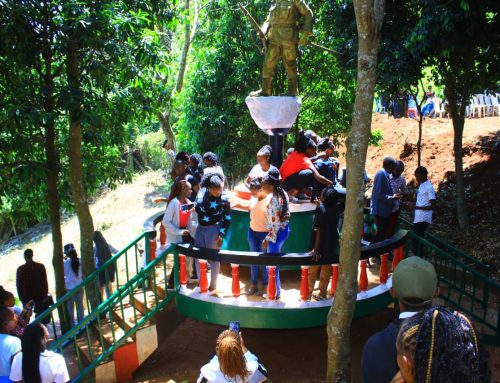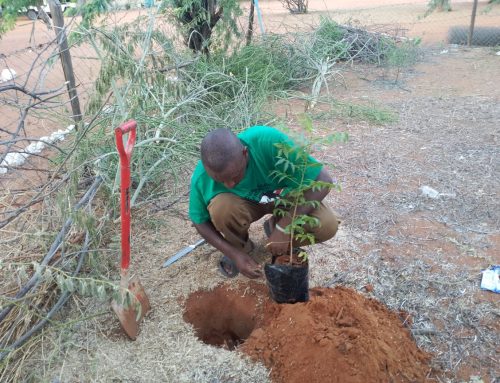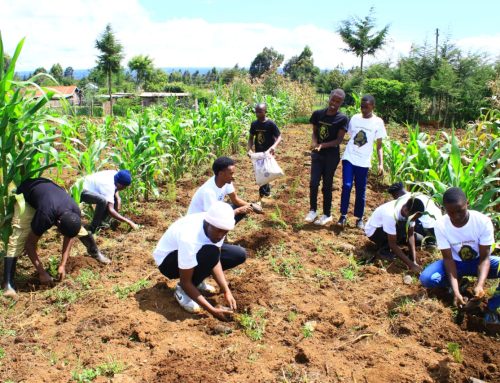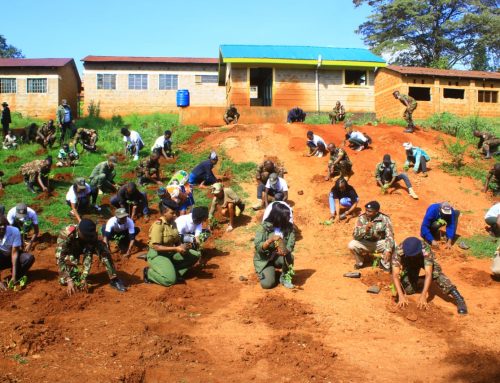It was Dedan Kimathi’s strong belief and wish that the political and military work of Mau Mau movement should be documented and preserved for posterity. In this connection, Kimathi insisted that every guerilla front commander should send a written monthly report on his unit’s activities, including the minutes of all meetings held in his camp, to the Kenya Parliament. Similar instructions were given to all Mau Mau leaders in the villages and urban centres. In keeping with this policy, Kimathi appointed Field Secretaries to tour all guerilla camps and battlefields and to document the activities of the guerrilla army.
From the time he established his army in the forest, Kimathi made a habit of writing down his daily observations of the independence struggle in a personal diary; he also filed all the communications he received and copies of the letters and documents he wrote. At the same time, he made sure that minutes of every session and General Conference of the Kenya Parliament and the Kenya Land Freedom Army (KLFA) were set down. ‘These documents,’ he once told members of the Kenya Parliament, ‘will be concrete evidence that we fought and died for this land.’
To preserve these historical materials, the Kenya Parliament established underground archives in Nyandarwa forest in 1953, and appointed guerrilla experts to man them. Thus the first truly national archive in Kenya was established.
However a most unfortunate incident occurred early in 1955: a KLFA turncoat led British forces to the site of the archives in the forest, and the entire collection of Mau Mau records was captured. According to the Baraza of 27 August 1955:
Early this year, government forces attacked a camp used by Dedan Kimathi in the Aberdare mountains. Among the numerous things found in the camp were many papers and exercise books used by Kimathi to record events.
The location of Dedan Kimathi’s camp was discovered by the armed forces as a result of information received in 1954. After the location was known, the camp itself was pinpointed through pictures taken from an aeroplane; then government troops moved in.
The captured documents and letters, written in Gikuyu, Kiswahili and English, were intact and well-preserved in four sacks. With the help of their African servants, the British colonial authorities translated and indexed these documents, and then collected them into 14 volumes of about 30 pages each; they were filed under the title: ‘The Kimathi Papers’. Copies of these documents were sent to the British M.I.5 and the Public Records Office in London, and a copy was deposited in the Kenyan colonial archives. None of these documents have been made public to this day.
Obviously, the British colonial authorities had concrete reasons for not wanting to avail these documents and letters to the public. First, they confirm, in no uncertain terms, the heroism of the Mau Mau movement, and the tremendous support that Kimathi had among the Kenyan masses; they also expose the brutality of the British forces and some of the many defeats they suffered at the hands of the Mau Mau fighters. Secondly, these texts describe the British imperialists and their Kenyan collaborators (to borrow Fidel Castro’s words), ‘in terms which they deserve and with words that cannot be erased from history’. What is more interesting, however, is the fact that the government of independent Kenya has collaborated with the British authorities in their efforts to conceal this glorious chapter of Kenya’s history. These texts, and many others dealing with Mau Mau, are ‘classified materials’ in our own ‘national’ archives; and under a joint British-Kenya agreement, they cannot be made public until 2013 A.D..
Indeed, it is a mystery that the rulers of an independent country should have agreed to withhold such important information from the Kenyan public. It is also shocking to know that large quantities of Mau Mau documents were destroyed shortly after independence.
In an attempt to unearth this mystery, I was able to obtain some original texts and copies of these documents from Kenyans who had them in their personal libraries. I also managed to photostat quite a few of the Mau Mau documents held in libraries and academic institutions abroad..
These texts were written by, and were for, those thousands of unnamed Kenyans who joined forces in the patriotic war against British colonial occupation. Their study will, therefore, make us more aware of: the development of the armed struggle in Kenya, its political weakness and strength; Dedan Kimathi’s relationship with his guerrilla fighters, workers and peasants; his political understanding of the social forces around him; and his undying love for his homeland. From these texts, we will become aware of the great sacrifice these compatriots made for the liberation of their country.
In summary, the main purpose of publishing these documents is twofold: first, I believe it is a matter of simple academic responsibility for me to make available to the Kenyan people documents and letters of such national and historical importance in the hope that this new information will help to stimulate serious research on the subject among Kenyan intellectuals. Secondly, I want to preempt the publication of a distorted, pro-colonial version of ‘The Kimathi Papers’ which might be aimed at reinforcing the Carothers-Henderson anti-Mau Mau theory. In the process, I want to undermine the anti-Mau Mau arguments that are being propounded by a handful of pro-imperialist Kenyan intellectuals.
The Dedan Kimathi Papers,
Maina Kinyatti, 1987.






